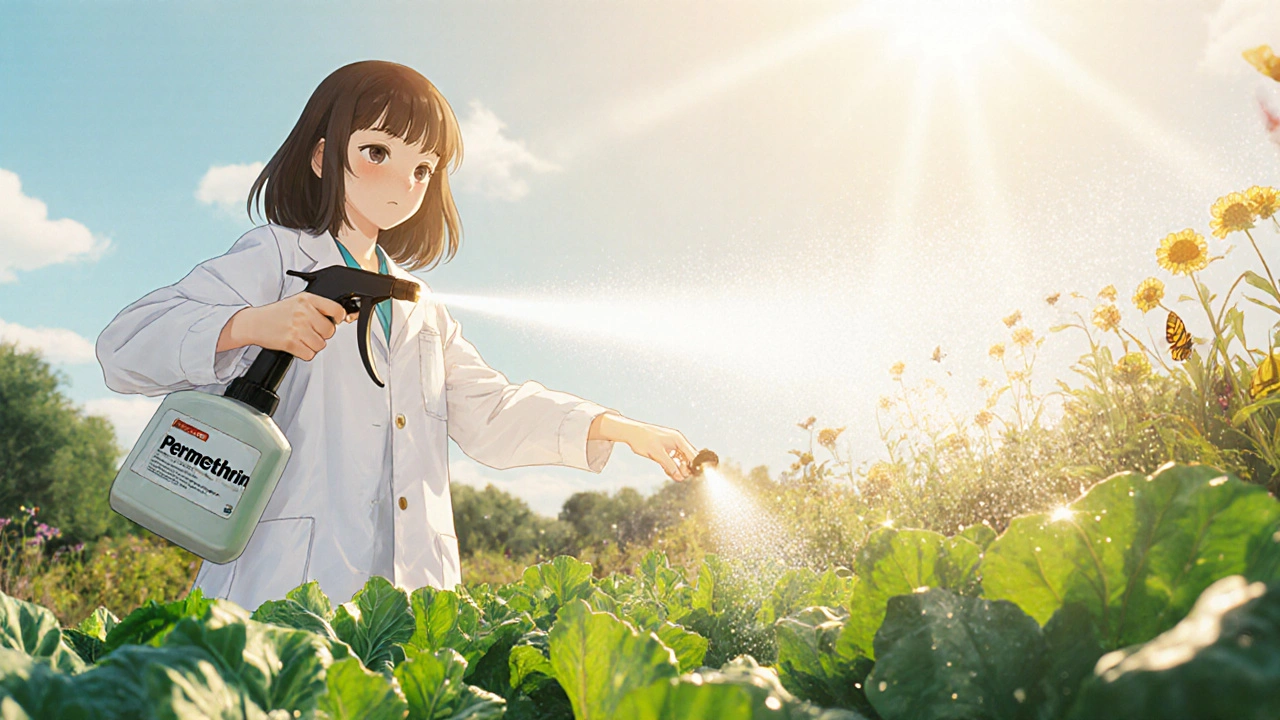
Ever wonder why headlines keep linking permethrin bees to a pollinator crisis? The story isn’t black‑and‑white, but the science is clear enough to help you make smarter choices for your garden, farm, or city park.
What is Permethrin?
Permethrin is a synthetic pyrethroid insecticide that mimics the natural compounds found in chrysanthemum flowers. It works by disrupting the nerve cells of insects, causing rapid paralysis and death. Developed in the 1970s, it quickly became popular because it’s cheap, stable in sunlight, and effective against a wide range of pests-ticks, mosquitoes, moths, and even carpet beetles.
For most household users, permethrin shows up in products like bug sprays, flea collars for pets, and lawn treatments. In agriculture, it’s sprayed on row crops, orchards, and ornamental plants. The EPA classifies it as a Category I pesticide, meaning it has a high acute toxicity to insects but relatively low toxicity to mammals when used as directed.
How Do Bees Get Exposed?
Bees encounter permethrin in three main ways: direct spray, contaminated nectar/pollen, and drift from treated areas. When a beekeeper sprays a field of vegetables, droplets can settle on nearby wildflowers. Worker bees foraging on those flowers unknowingly bring the chemical back to the hive, contaminating honey and brood.
Runoff is another sneaky pathway. After a rainstorm, permethrin can wash into streams that feed watering stations for honey‑bees and bumblebees alike. Even a tiny amount-just a few nanograms per gram of nectar-can be enough to affect bee behavior.
Finally, drift occurs when wind carries fine mist beyond the target zone. Studies in California’s Central Valley recorded drift distances of up to 150 meters from a single application, putting nearby apiaries at risk.
Scientific Findings on Toxicity
The key metric scientists use is the LD50-the dose that kills 50 % of a test population. For the European honey bee (Apis mellifera), the oral LD50 of permethrin is roughly 0.4 µg/bee, while the contact LD50 drops to about 0.03 µg/bee (US EPA, 2023). Those numbers sound tiny, and they are: a single spray can easily exceed that amount on a forager’s legs.
But acute toxicity isn’t the whole story. Sub‑lethal effects-impairments to navigation, reduced pollen collection, and weakened immune responses-have been documented in multiple peer‑reviewed papers. A 2022 field study in the UK showed that colonies exposed to permethrin‑treated clover collected 25 % less pollen and produced 15 % fewer brood cells compared with untreated controls.
Not every study paints a dire picture. Some research from the University of Florida found that when permethrin is applied early in the morning, before peak bee foraging, the measured colony loss drops dramatically. Timing, application method, and formulation (e.g., micro‑encapsulated vs. liquid) all influence the real‑world impact.
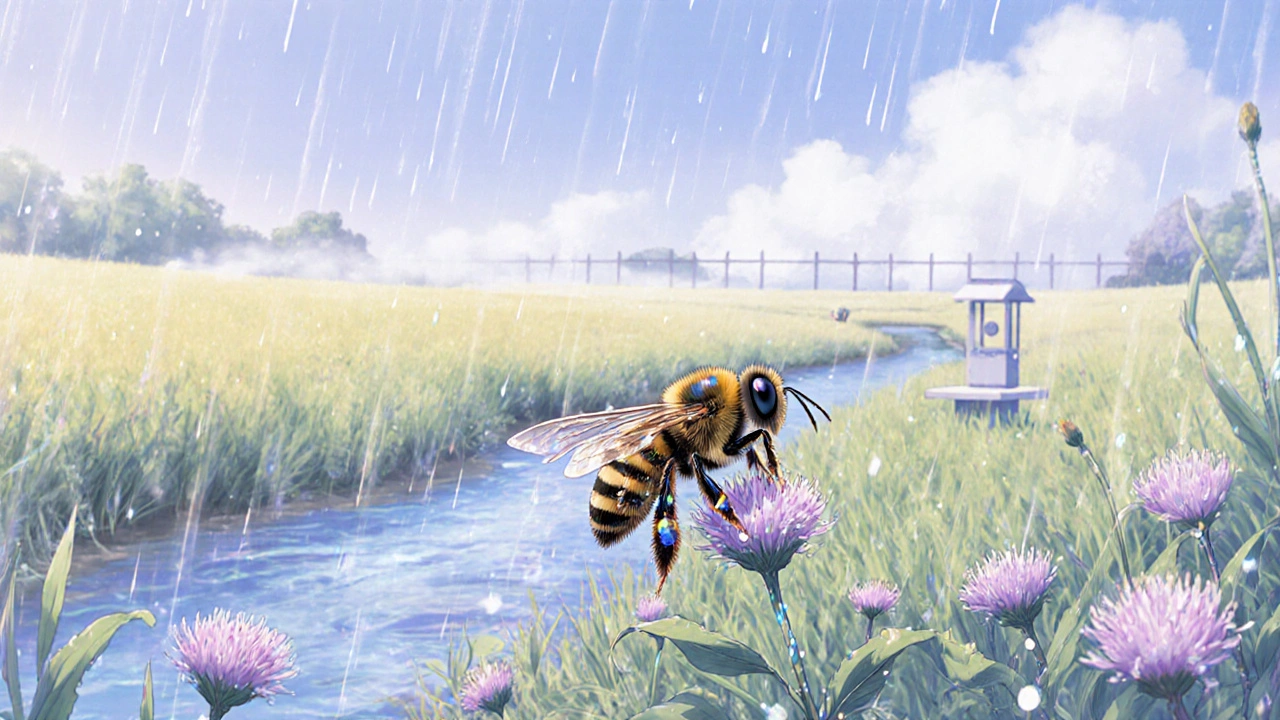
The Controversy: Why Opinions Clash
Environmental groups argue that any use of permethrin near flowering habitats is irresponsible because even low‑level exposure threatens pollinator health. They cite the precautionary principle: better safe than sorry when ecosystems are already under stress from habitat loss and climate change.
On the other side, pest‑control professionals point out that permethrin remains one of the few tools that reliably controls disease‑carrying vectors like ticks and mosquitoes. In regions where Lyme disease is rising, they claim the public health benefit outweighs the relatively modest risk to bees-especially if users follow label instructions.
The policy arena reflects this split. In 2024 the European Union tightened restrictions on outdoor permethrin applications near apiaries, while the United States EPA continues to endorse its use with “bee‑safe” guidelines that emphasize timing and buffer zones.
Reducing Risk: Best Practices for Growers & Homeowners
If you need to use permethrin, you can dramatically cut bee exposure by adopting these habits:
- Apply in the evening or early morning. Bees are less active, so fewer individuals encounter the spray.
- Maintain a 30‑meter buffer. Keep the spray zone at least 100 feet away from known bee foraging sites.
- Use targeted sprayers. Backpack or spot‑spray equipment reduces drift compared to broadcast sprayers.
- Choose low‑residue formulations. Micro‑encapsulated products stay on plant surfaces longer, allowing you to spray less frequently.
- Integrate non‑chemical controls. Plant pest‑repellent flowers, encourage natural predators, and practice crop rotation.
For commercial growers, the Integrated Pest Management (IPM) framework offers a step‑by‑step roadmap: monitor pest levels, set action thresholds, and only spray when an economic injury level is reached. This approach not only saves money but also reduces pesticide load on the environment.
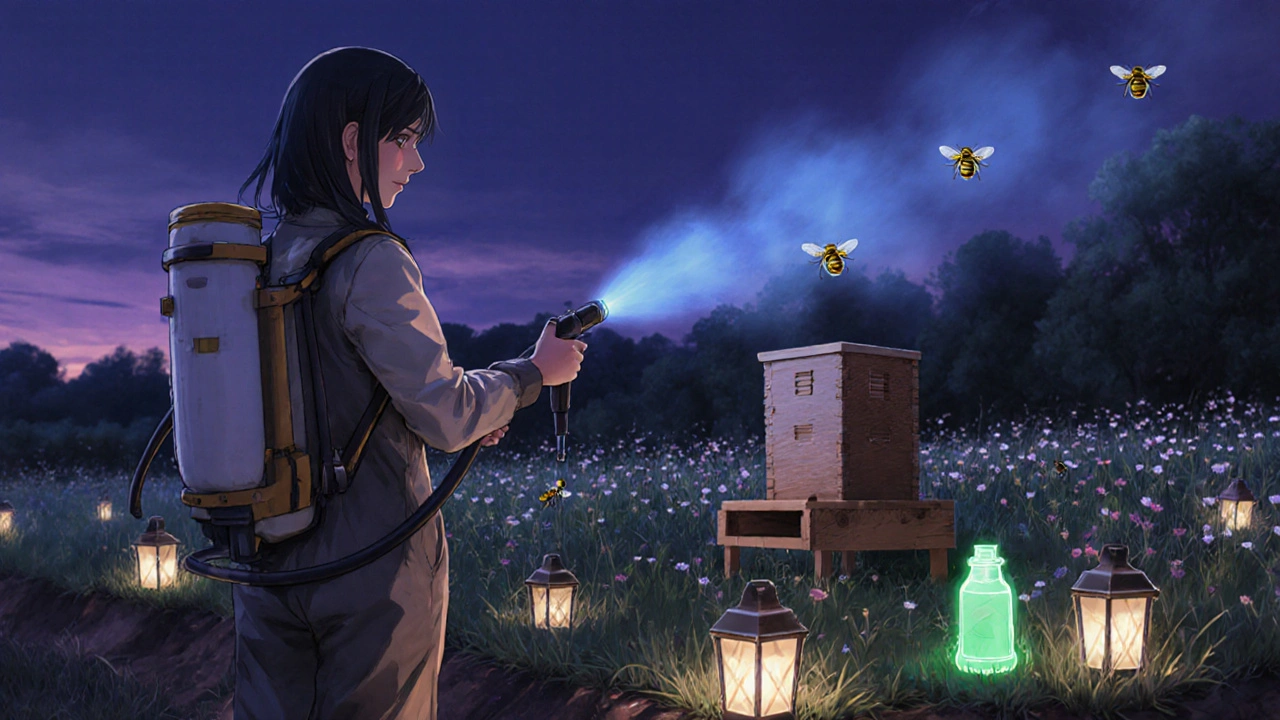
Safer Alternatives to Permethrin
When you’re looking for a bee‑friendly option, consider these alternatives:
| Insecticide | Mode of Action | Typical Bee LD50 (µg/bee) | Common Uses |
|---|---|---|---|
| Permethrin | Pyrethroid - nerve disruption | 0.4 (oral), 0.03 (contact) | Orchards, lawns, mosquito control |
| Neonicotinoids | Nicotine analog - binds to nerve receptors | 0.001 (oral) | Seed treatments, systemic foliar sprays |
| Horticultural Oil | Physical coating - smothers insects | >100 (contact) | Scale insects, aphids, mites |
Horticultural oil stands out because its contact LD50 for bees is over 100 µg/bee-essentially non‑lethal. It works best against soft‑bodied pests and can be applied during bloom without harming foragers. If you need broader spectrum control, look for botanical insecticides like neem oil, which have moderate toxicity but degrade quickly in sunlight.
Remember, no pesticide is completely risk‑free. The goal is to choose the lowest‑impact tool for the job and to apply it responsibly.
Quick Checklist: Bee‑Friendly Pesticide Use
- Identify the pest and confirm it exceeds the action threshold.
- Choose the least toxic product that will control the pest.
- Plan the application for dusk or dawn.
- Keep a 30‑meter (100‑foot) buffer from flowering plants and hives.
- Use calibrated equipment to avoid over‑spraying.
- Record the date, weather, and product batch for future reference.
- Monitor bee activity for 48 hours after treatment and adjust future practices if needed.
Follow this list and you’ll be doing your part to keep both your garden healthy and the pollinators thriving.
Is permethrin safe for honey bees if applied correctly?
When used according to EPA label directions-specifically applying in the early morning or evening, maintaining a 30‑meter buffer, and avoiding bloom periods-the risk to honey bees drops sharply. However, no use is completely risk‑free, so always consider non‑chemical alternatives first.
How does permethrin compare to neonicotinoids for bee toxicity?
Neonicotinoids are far more toxic to bees, with oral LD50 values in the nanogram range (<0.001 µg/bee). Permethrin’s oral LD50 sits around 0.4 µg/bee, making it less lethal but still a concern, especially for contact exposure.
Can I use horticultural oil during bloom without harming bees?
Yes. Horticultural oil has a very high contact LD50 for bees (>100 µg/bee) and works by physically coating insects. It’s considered one of the safest options for use on flowering plants.
What legal restrictions exist for permethrin use near bee habitats?
In the EU, outdoor permethrin sprays are banned within 30 meters of known bee foraging sites. The US EPA allows use but mandates buffer zones and application timing to protect pollinators. Always check local regulations before spraying.
How can I tell if my bees are being affected by pesticide drift?
Look for reduced foraging activity, disoriented flight patterns, and a sudden drop in brood numbers. Lab testing of honey or pollen can confirm the presence of permethrin residues.
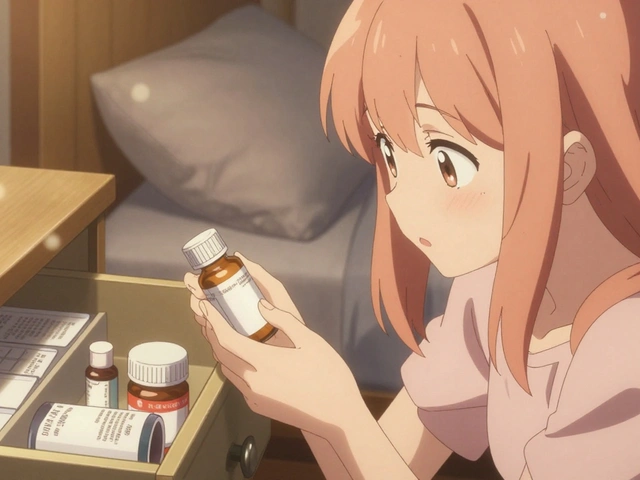


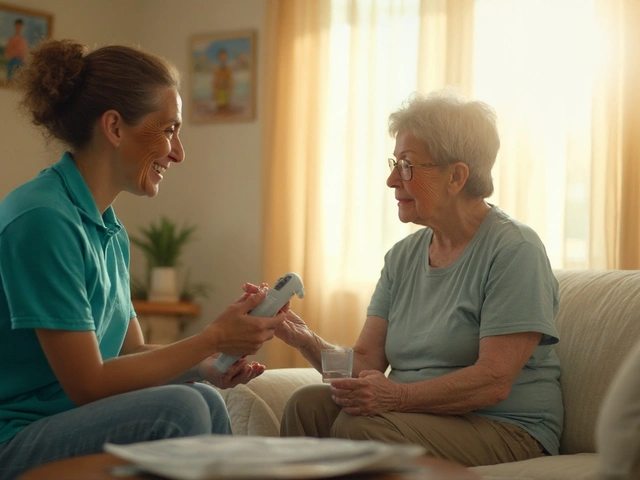
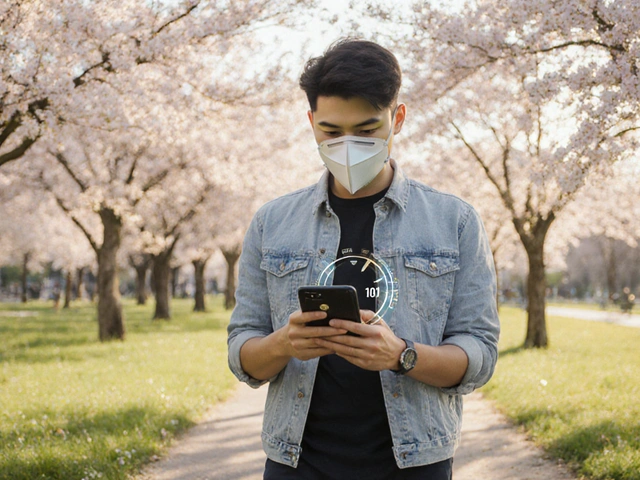
Comments (10)
Tim Waghorn
While the recent discourse surrounding permethrin frequently devolves into emotive polemics, a measured appraisal of the extant data reveals a more nuanced reality. The acute oral LD50 for Apis mellifera, recorded at approximately 0.4 µg per bee, undeniably denotes a high degree of toxicity under laboratory conditions. Nevertheless, field studies consistently demonstrate that exposure levels in most managed agro‑ecosystems remain below the threshold that precipitates colony collapse. It follows that a binary categorization of permethrin as either a saviour of public health or a scourge of pollinators is scientifically indefensible. Moreover, regulatory frameworks such as the United States Environmental Protection Agency’s “bee‑safe” guidelines incorporate empirically derived buffer zones that materially mitigate drift. In jurisdictions where enforcement of a thirty‑metre exclusion radius is rigorously upheld, incidences of sub‑lethal behavioural impairment decline markedly. The temporal dimension of application further modulates risk; early‑morning treatments coincide with reduced foraging activity, thereby limiting contact. From a legal standpoint, non‑compliance with label directives can constitute negligence, exposing applicators to civil liability under both federal pesticide statutes and state tort law. Conversely, absolute prohibition of permethrin would deprive vector control programmes of an economically viable tool, potentially elevating disease burden from Lyme‑borreliosis and West Nile virus. An integrated pest management strategy, which privileges monitoring, threshold‑based interventions, and selective use of low‑residue formulations, reconciles these competing interests. In practice, growers who adopt spot‑spraying techniques and calibrate equipment experience both cost savings and reduced non‑target exposure. The broader ecological context must also be considered: habitat fragmentation and climate stressors already compromise pollinator resilience, amplifying the impact of any additional toxicant. Accordingly, stewardship of pollinators necessitates a holistic approach rather than reliance on isolated chemical bans. Finally, ongoing research into micro‑encapsulated delivery systems promises to further diminish off‑target deposition, offering a pathway toward more sustainable use. Stakeholders are thus urged to evaluate risk on a case‑by‑case basis, informed by the latest peer‑reviewed evidence, rather than succumbing to anecdotal alarmism.
Laura Hibbard
Oh great, another textbook lecture – just what the internet needed. Sure, follow the guidelines, but who has time to memorize buffer zones while the mosquitoes are already biting? At least the article gives us a checklist that won’t kill the bees if you actually read it. Maybe we should all just become beekeepers and skip the chemicals altogether.
Rachel Zack
Honestly, the whole permethrin debate feels like a moral crusade that forgets the real world. People love to shout about "save the bees" while ignoring that a few nanograms won't kill a colony – definitly not the end of the world. Yet we cant ignore that repeated low‑dose exposure can add up, and that's where the ethiccal problem lies. Those who push for outright bans are often ignoring the benefits for public health, which is a trade‑off we must admit. Let’s not pretend the solution is simple, but let’s also not throw away tools that keep us safe.
Lori Brown
Love the balanced vibe! 😊 You’re right – it’s not all black and white, and those tiny doses add up over time. Keep spreading the good info and remember, a happy garden = happy bees! 🌸
Dave Sykes
Folks, think of permethrin as just another tool in the toolbox. If you scout your fields, know the pest pressure and only spray when you cross the economic threshold, you’ll protect both crops and pollinators. Use a backpack sprayer and aim for that thirty‑meter buffer – it’s a game changer. Stay sharp and keep learning, the land will reward you.
Kasey Marshall
spot‑spraying works better than broadcast it reduces drift and saves product
Hershel Lilly
It's interesting how cultural attitudes toward pesticide use differ across regions. In some countries, community guidelines incorporate bee‑friendly practices as a norm, while elsewhere the focus remains solely on yield. Observing these variations can teach us valuable lessons about integrating tradition with science. Perhaps we can borrow the best of each approach for a more sustainable future.
Rhea Lesandra
Exactly, the diversity of perspectives is what makes this conversation rich. While concise tips are handy, diving deep into the mechanisms behind bee toxicity reveals patterns that short summaries miss. For instance, the metabolic pathways that degrade permethrin in bee tissues are temperature‑dependent, meaning that cooler climates may see prolonged exposure effects – a nuance often omitted from quick checklists. In the end, both brevity and depth have their place, and combining them offers the most robust guidance for growers and hobbyists alike.
Jennyfer Collin
One must inquire whether the regulatory agencies are truly independent or merely instruments of a concealed agribusiness agenda that seeks to conceal the ecological fallout while touting “benefits” to public health. The pervasive narrative that permits such chemicals often omits the clandestine lobbying efforts and the subtle coercion exerted upon policymakers. It would be prudent to scrutinize every advisory note, for beneath the veneer of scientific objectivity may lurk ulterior motives. 🌐
Brady Johnson
The data is stark: sub‑lethal doses disrupt navigation, cripple foraging, and erode immune defenses, ultimately destabilizing colony dynamics. When you layer that against the backdrop of habitat loss, the cumulative stress is nothing short of catastrophic. Ignoring these synergistic effects is tantamount to willful negligence, and the moral weight of that choice bears heavily on our conscience. It is time to demand decisive action before the silent decline becomes an irreversible catastrophe.